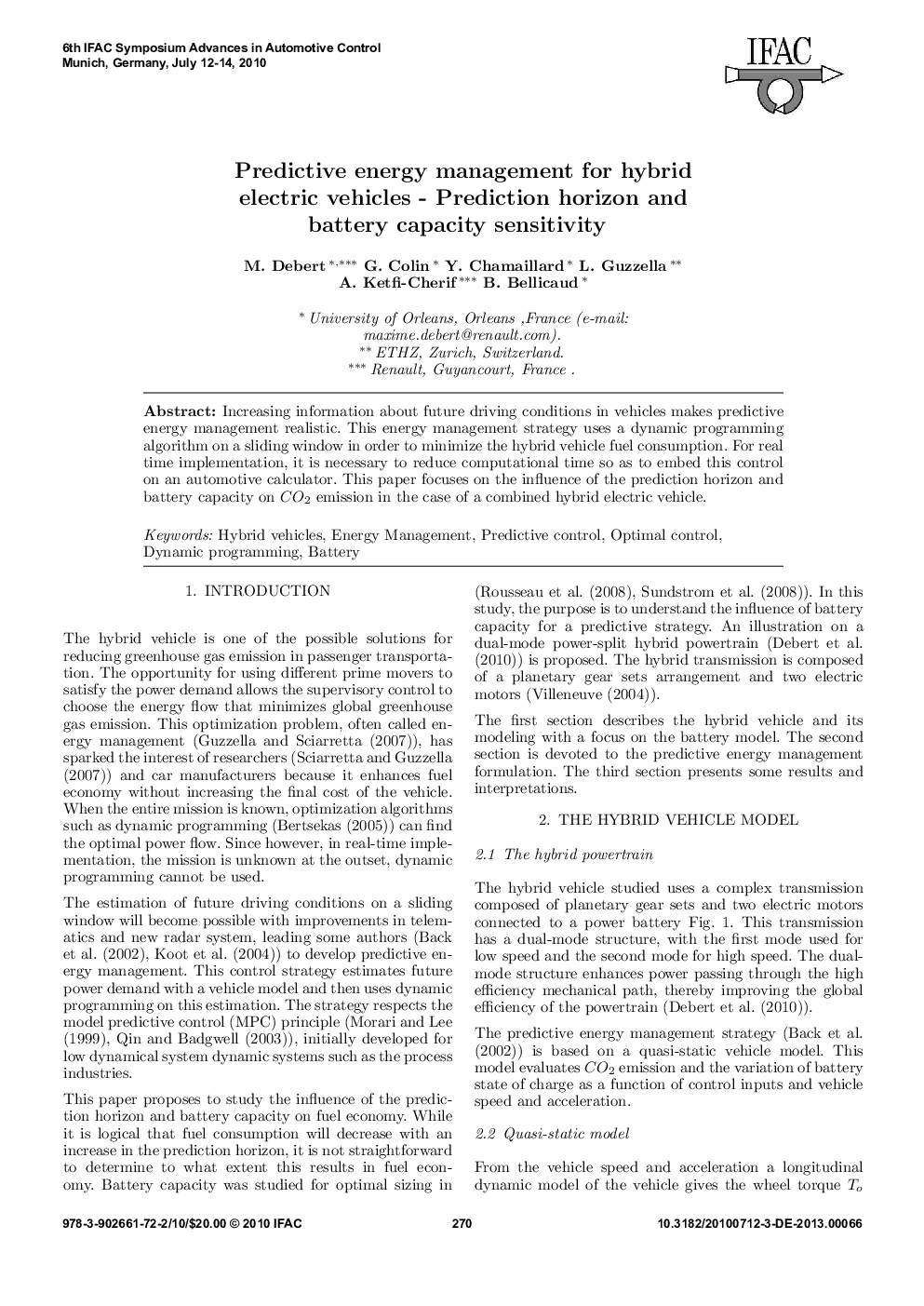| Article ID | Journal | Published Year | Pages | File Type |
|---|---|---|---|---|
| 719901 | IFAC Proceedings Volumes | 2010 | 6 Pages |
Abstract
Increasing information about future driving conditions in vehicles makes predictive energy management realistic. This energy management strategy uses a dynamic programming algorithm on a sliding window in order to minimize the hybrid vehicle fuel consumption. For real time implementation, it is necessary to reduce computational time so as to embed this control on an automotive calculator. This paper focuses on the influence of the prediction horizon and battery capacity on CO2 emission in the case of a combined hybrid electric vehicle.
Keywords
Related Topics
Physical Sciences and Engineering
Engineering
Computational Mechanics
Authors
M Debert, Golin Yhamaillard, Guzzella A Ketfi-herifellicaud,
